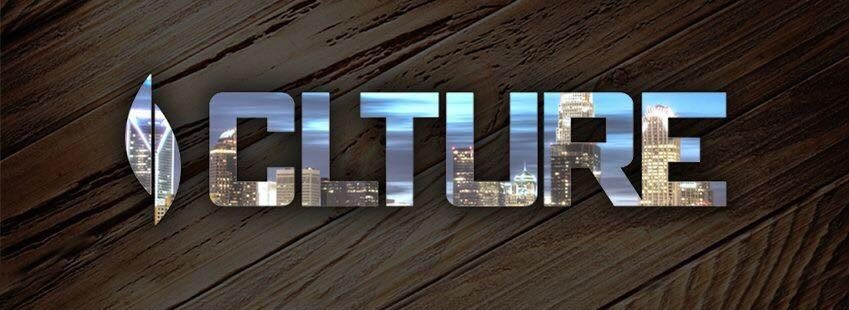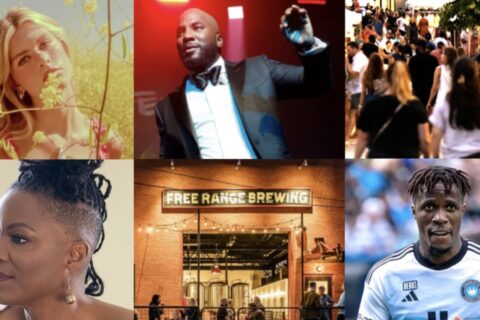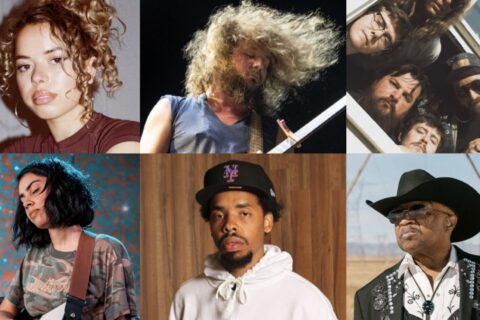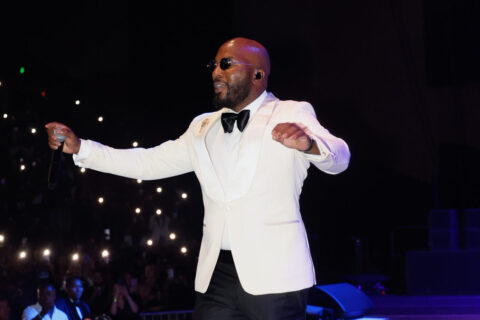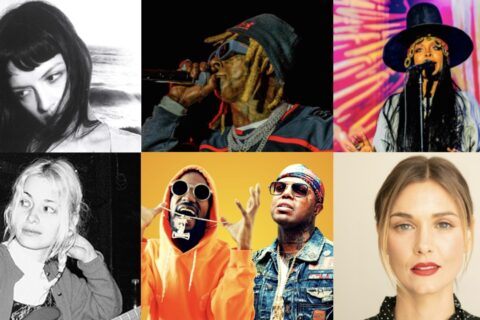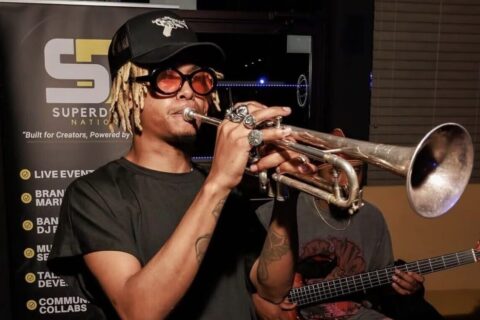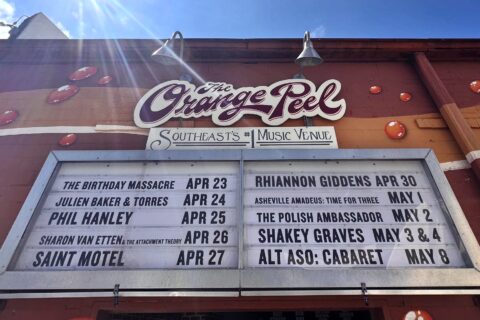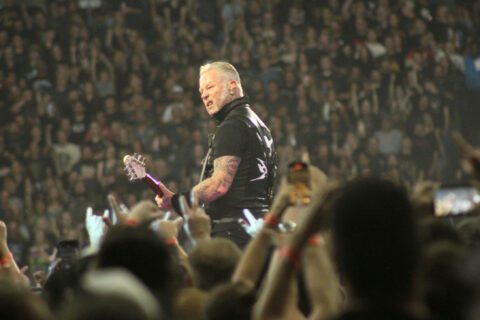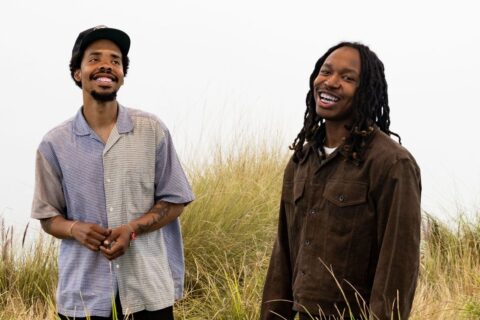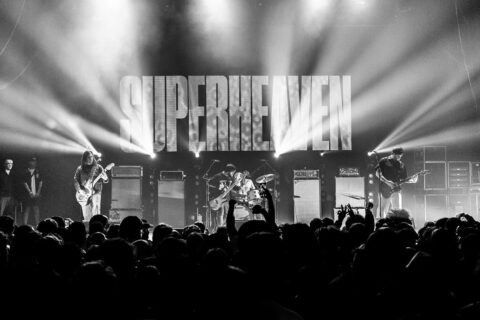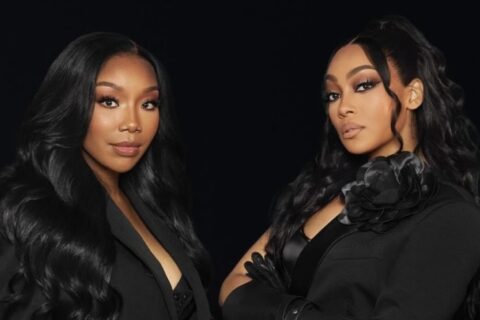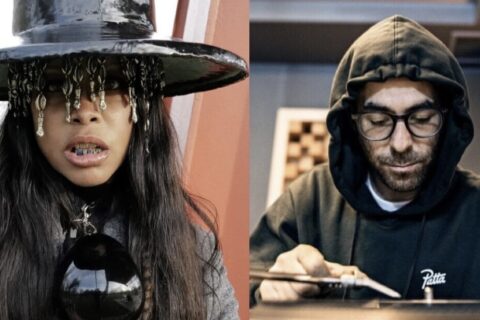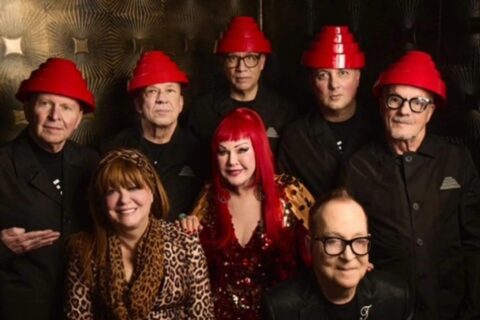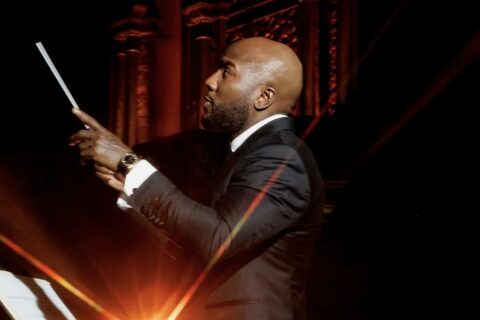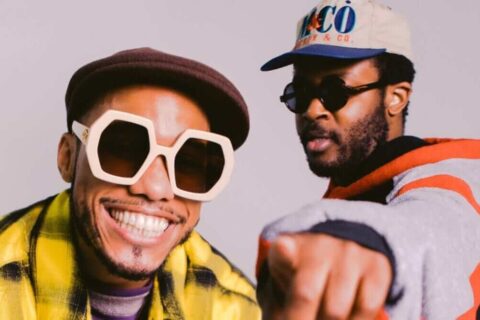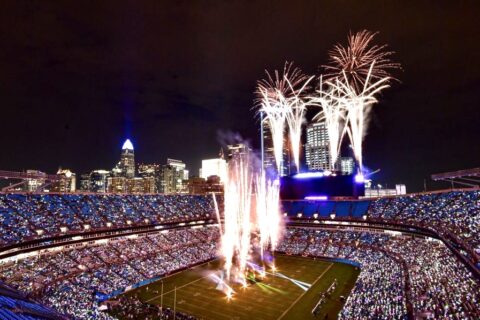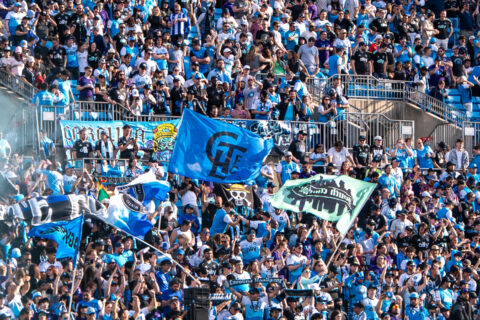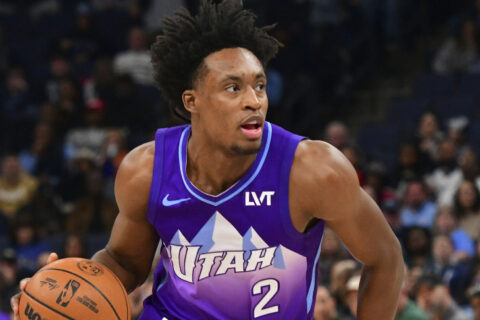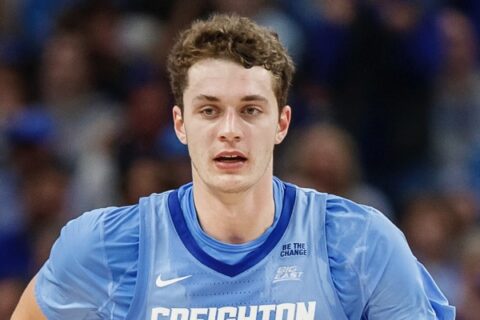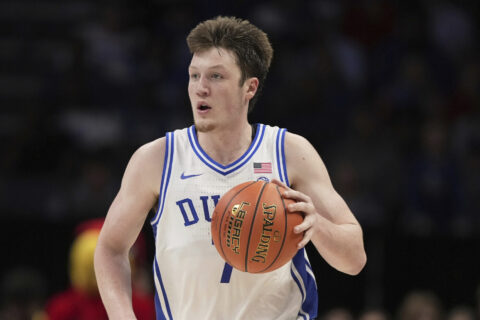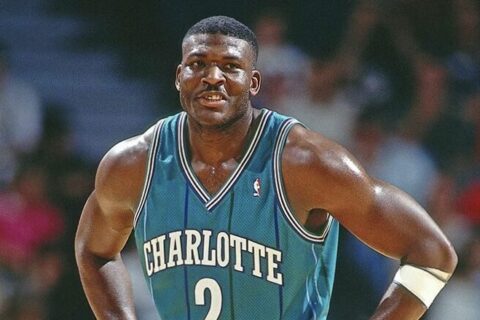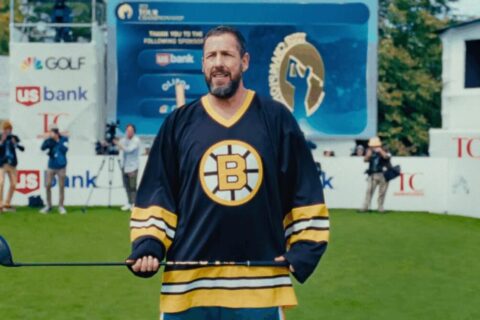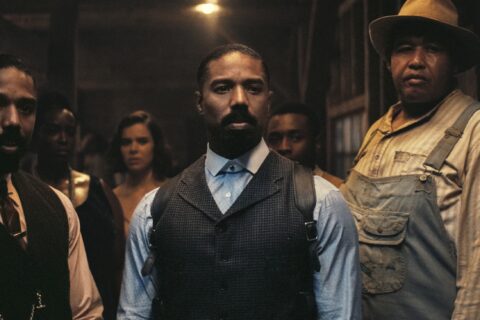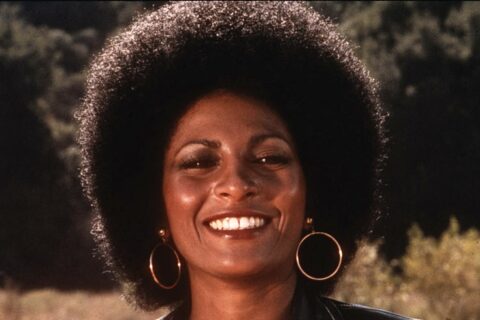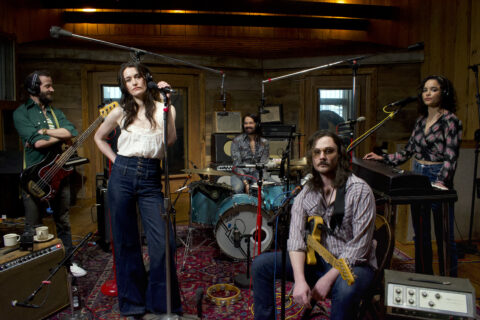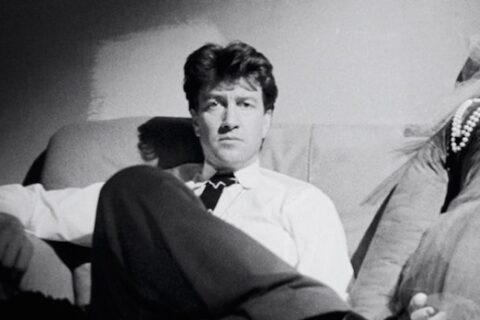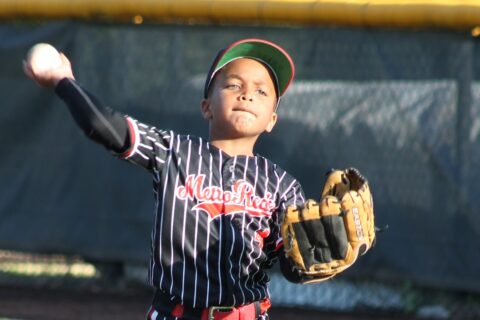Charlotte Weekly Events Guide
-
Your CLTure Guide to the Best Events happening in Charlotte this Week
By CLTure July 7, 2025 Monday, July 7 The Bill Hanna Legacy Jazz Session at Petra’s (7 p.m.) Tickets: $9.98 Celebrate...
-
Hopscotch Music Festival celebrates 15 years with My Morning Jacket, Earl Sweatshirt,…
By Cameron Lee July 9, 2025 North Carolina’s largest indie music festival, Hopscotch, has unveiled the lineup for its 15th...
-
Jeezy’s 20th-Anniversary TM:101 Live Symphonic Orchestra Tour is a Celebration of Evolution
By Cameron Lee July 6, 2025 When Young Jeezy dropped Let’s Get It: Thug Motivation 101 in the summer of...
-
2025 Charlotte Summer Concert Guide
By CLTure July 2, 2025 An expansive concert guide covering a wide range of genres and all of the upcoming...
-
Braxton Bateman is making Charlotte’s jazz ecosystem “Mo’ Betta” with The Exchange…
By Cameron Lee June 25, 2025 Charlotte trumpeter and rising bandleader Braxton Bateman grew up in the Queen City attending...
-
Asheville is still recovering from Helene, and a summer concert road trip…
By Cameron Lee June 17, 2025 Photo: The Orange Peel Western North Carolina is regaining its stride after the devastation...
-
Metallica — Masters of Puppets and Stadium-Shaking Metal Tours
By Cameron Lee June 1, 2025 Photo: Daniel Coston Uptown Charlotte was cloaked in a sea of black on Saturday...
-
Charlotte’s Mavi reunites with Earl Sweatshirt on introspective new track “Landgrab,” offering…
By Cameron Lee May 28, 2025 Photo: Alex Free Charlotte lyricist Mavi returns with his first release of the year,...
-
Luke Combs, Hattie Leeper, Dexter Romweber, and David Childers among 2025 North…
By Cameron Lee May 5, 2025 The North Carolina Music Hall of Fame has announced its 2025 inductees, which include...
-
Post-grunge rockers Superheaven coming to Charlotte with Cloud Nothings, End It and…
By Cameron Lee June 24, 2025 Fresh off the release of their first album in a decade, Pennsylvania post-grunge outfit...
-
R&B stars Brandy and Monica bringing highly anticipated The Boy Is Mine…
By CLTure June 24, 2025 ‘90s/2000s R&B powerhouses Brandy and Monica — best known for their 1998 multi-platinum duet, “The...
-
Northwest School of the Arts alum Reneé Rapp will conclude her biggest…
By CLTure June 23, 2025 Northwest School of the Arts alum and Charlotte-area native Reneé Rapp has announced a 17-date...
-
Erykah Badu and The Alchemist have announced a tour for their collab…
By Cameron Lee June 23, 2025 In anticipation of their upcoming collaborative project Abi & Alan, neo-soul pioneer Erykah Badu...
-
New wave icons DEVO and the B-52s will bring their continuing farewell…
By Cameron Lee June 17, 2025 New wave legends DEVO and the B-52s are teaming up for an 11-date co-headlining...
-
Stevie Nicks has added 2025 tour dates and will return to Charlotte…
By CLTure June 16, 2025 Two-time Rock and Roll Hall of Famer Stevie Nicks has added multiple dates to her...
-
Want to win two tickets to Jeezy’s ‘Thug Motivation 101’ black-tie symphonic…
By CLTure July 1, 2025 We’re teaming up with Variety Entertainment to give away two tickets to Jeezy’s black-tie symphonic...
-
Anderson .Paak and Knxwledge are touring together as NxWorries for the first…
By CLTure May 21, 2025 NxWorries, the Los Angeles-based hip-hop/neo-soul duo composed of Anderson .Paak and producer Knxwledge, will be...
Sports
-
Panthers Fan Fest will return to Charlotte on August 2 with a…
By CLTure July 9, 2025 Photo: Panthers Panthers Fan Fest will return to Charlotte on August 2, after the franchise...
-
Charlotte FC will look to get the season back on track as…
By Billy McGee July 4, 2025 Charlotte FC returns home this Saturday to face Orlando City SC in their first...
-
Hornets have traded Jusuf Nurkic for Collin Sexton and a second-round pick
By James Plowright June 29, 2025 Photo: Brandon Dill / AP With free agency just 24 hours away, the Charlotte...
-
Hornets prioritize defense and maturity with Ryan Kalkbrenner and Sion James in…
By James Plowright June 27, 2025 Photo: Michael Spomer / AP Charlotte didn’t have to wait long on night two...
-
Hornets gain floor-spacing wings in Kon Knueppel and Liam McNeeley, plus a…
By James Plowright June 26, 2025 Photo: Chris Carlson / AP The Charlotte Hornets selected Duke freshman Kon Knueppel with...
-
Hornets legend Larry Johnson is scheduled to make his first public appearance…
By Cameron Lee June 16, 2025 Photo: NBA.com Former Charlotte Hornets great Larry Johnson is set to make his first...
Entertainment
-
Cirque du Soleil brings its most whimsical, nature-inspired production, ‘OVO,’ to Charlotte this summer
By CLTure July 6, 2025 Photo: Marie-Andrée Lemire The world’s largest contemporary circus company, Cirque du Soleil — French for...
-
Adam Sandler will return to North Carolina this summer following the release of ‘Happy Gilmore 2’
By CLTure June 26, 2025 Following the July 25 release of the long-awaited Happy Gilmore sequel, Adam Sandler is headed...
-
Ryan Coogler’s Southern vampire epic ‘Sinners,’ starring Michael B. Jordan in dual roles, sinks its teeth in and doesn’t let go
By Zach Goins April 18, 2025 Director Ryan Coogler has always moved with purpose, but with his latest feature film,...
-
Pam Grier, trailblazing ’70s movie star known for Blaxploitation films ‘Foxy Brown’ and ‘Coffy,’ will be in Charlotte area this summer
By CLTure April 16, 2025 Pam Grier, the actress best known for her roles in iconic 1970s Blaxploitation films...
-
Blumenthal Arts’ 2025-26 Broadway season features multiple Tony Award-winning musicals
By Cameron Lee April 14, 2025 (updated) Photo: Kristin Gallegos Blumenthal Arts unveiled its 2025-26 season with an exclusive hour-long...
-
The Independent Picture House celebrates the films of David Lynch with a series of his classic works
By Cameron Lee April 13, 2025 The Independent Picture House is celebrating the works of the late neo-noir filmmaker and...
CLTure Food
-
A Taste of the Philippines: Palengke and Ubeland Bring Colorful Filipino Flavors…
By Cameron Lee May 22, 2025 Palengke — the Filipino word for open-air market — is a vital part of...
-
Keith Lee is bringing his popular Family Food Tour to Charlotte, Raleigh,…
By Cameron Lee May 10, 2025 Popular MMA fighter-turned-social media sensation Keith Lee is bringing his viral Family Food Tour...
-
NoDa Asian Food Truck Rally to Celebrate AAPI Month with Neighborhood’s Largest…
By CLTure May 8, 2025 CLTure is partnering with the Carolinas Asian American Chamber of Commerce, Crown Station, Divine Barrel...
-
Charlotte and Raleigh will celebrate their first Asian Restaurant Week to kick…
By Cameron Lee May 2, 2025 Photo: Anise Pho (Raleigh) For decades in North Carolina, many authentic Asian-owned restaurants lacked...
-
Korean Restaurant Guide: Charlotte has a growing number of Korean food and…
By Beth Mack January 15, 2025 (updated) More and more Korean restaurants have emerged in cities across the country, and...
-
NoDa Restaurant Guide
By Beth Mack July 23, 2024 Constructed as a village for textile mills in the early 1900s, then revitalized as...
Community
-
B&K Tea Cafe is celebrating identity and Asian culture, one boba tea at a time
By Cameron Lee June 19, 2025 Between 2018 and 2022, the number of bubble tea shops in the U.S. grew...
-
Charlotte’s Asian & Dragon Boat Festival: A City Staple Celebrating Identity, Heritage, and Community for Over 20 Years
By Cameron Lee May 1, 2025 Dr. John Chen, chairman of the Carolinas Asian American Chamber of Commerce (CAACC) and...
-
Charlotte nonprofit the Knothole Foundation will host high school baseball games and youth clinic for Jackie Robinson Day
By Cameron Lee April 12, 2025 Since 2004, Major League Baseball has honored and celebrated Jackie Robinson — the Hall...
-
Khanh and Vy of NC Nails Esthetics Academy are creating career paths and diversifying the nail salon and beauty industry
By Cameron Lee April 3, 2025 Sisters Khanh Mai and Vy Cunningham, who came to Charlotte from Vietnam in 2000,...
